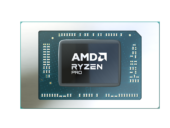
Artificial Intelligence
Artificial IntelligenceGoogle Gemini vs. ChatGPT: Is Gemini Better Than ChatGPT?
Now that Google Gemini has entered the arena, how well can it compete against OpenAI’s ChatGPT?

Now that Google Gemini has entered the arena, how well can it compete against OpenAI’s ChatGPT?

Microsoft’s generative AI companion Copilot gets more deeply integrated into Windows 11 with the latest software update, which also includes new voice control and accessibility tools.

The average salary potential for each top tech skill is also provided by Indeed. Companies hiring for these tech skills include Apple and NVIDIA.

Get up and running with ChatGPT with this comprehensive cheat sheet. Learn everything from how to sign up for free to enterprise use cases, and start using ChatGPT quickly and effectively.

Microsoft just rolled out two new Copilot-enabled devices: Surface Pro 10 and Surface Laptop 6.

Plus, Salesforce bundles its AI implementation and data governance services.

A new report by cyber security firm Radware identifies the four main impacts of AI on the threat landscape emerging this year.

Get up and running with ChatGPT with this comprehensive cheat sheet. Learn everything from how to sign up for free to enterprise use cases, and start using ChatGPT quickly and effectively.

TechRepublic digs into the business implications of artificial intelligence trends highlighted in Stanford’s AI Index Report, with help from co-authors Robi Rahman and Anka Reuel.

Discover the potential of artificial intelligence with our comprehensive cheat sheet. Learn more about the concepts, platforms and applications of AI.

Tech giants weigh in on how they try to mitigate the effects of generative AI on power and water resources.

Oxford University researchers used an approach dubbed “blind quantum computing” to connect two quantum computing entities in a way that is completely secure.

AI-native language translation application DeepL Translate is launching into Australia and Singapore following regional forays into Japan and South Korea. Founder and CEO Jarek Kutylowski said it is targeting APAC businesses that require more natural language translations.

Data center systems and mobile devices will lead the expected growth in IT spending, according to Q2 predictions.

Most AI foundation models are being developed in markets like the U.S. and China. Research from Australia asks whether other countries should be building sovereign AI models for citizens and businesses.

IdeaAize all-in-one AI toolkit supports content creation, AI voiceovers, code generation, image generation and more all for a single lifetime price.

Jott Pro is an AI solution that processes text and audio recordings to help you transcribe information and scale your productivity up a notch.

Organizations can contribute to the platform’s GitHub or receive a framework for creating enterprise-grade generative AI systems.

Some indicators suggest Australian technology sector salary growth is flatlining, but this is better seen in the context of strong growth in salaries over the long term and great prospects for the future.

Speeding up large language model workloads is one of the priorities for the business laptop processors.